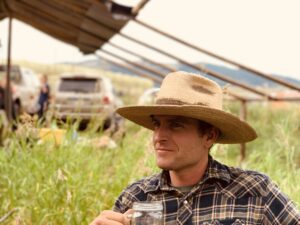
Cooper Hibbard is the fifth generation of his family to manage Sieben Live Stock Company near Helena, MT. He is committed to improving his rangeland to ensure the sixth generation can take over the ranch. Courtesy photo.
By Stan Wise
PIERRE, SD — Before Cooper Hibbard came home to manage his family’s ranch, he studied ag business, rangeland resources and Spanish at California Polytechnic State University and then worked on ranches all over the world.
That education and experience prepared him to become the fifth generation of his family to manage Sieben Live Stock Company near Helena, MT. His range management practices have increased his operation’s forage productivity and harvest rate by 200 percent during the driest decade in the ranch’s history and allowed him to increase his herd by 20 percent after a recent drought year that saw his neighbors destocking by as much as 40 percent.
“Our stocking rate is certainly increased,” Hibbard said. “I mean, we don’t know how many cattle we can run now. That’s kind of the stage that we’re in right now.”
He’ll share the secrets of his success at the 2024 Soil Health Conference, Jan. 23-24 at the Best Western Ramkota Hotel in Rapid City.
Hibbard calves in June and grazes his cows through the winter.
“In the last seven winters we’ve been non-selective grazing them and moving them every day. Very high density, short duration grazes, and then rest that field for at least a year. So, it’ll see cattle for one day,” he said.
Non-selective grazing involves grazing or trampling nearly all available forage and then allowing the land to rest for a longer period.
“Every single plant is affected. When that happens, all plants are put on a level playing field, and then the plants that are set up for success in that scenario are the plants with the deepest root systems and the most amount of leaf area,” Hibbard said. “Those are, more often than not, your native perennial plants that you want to see.”
Hibbard’s strategy is not only paying off in terms of forage production and stocking rates, but it is also improving his soil.
“Last year we had a bunch of soil health tests done by a third party in our winter zone where we’re doing this type of grazing, and our soil organic matter percentage on average was ten and a half percent on native rangeland, which is pretty remarkable,” he said. “You basically end up extending your growing season by selecting these desirable species with the deeper root systems that grow for longer periods of time. They’re more drought resilient, and grazing in these tighter densities, a byproduct is that you’re laying down a lot of litter. And so you’re covering the soil, and so you’re moderating the soil temperature, which decreases evaporation, which then extends the growing season more. So you’re growing more grass. It just has this really neat, exciting snowball effect.”
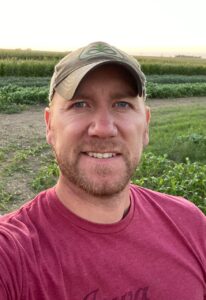
Zack Smith is a northern Iowa producer who is developing the Stock Cropper system, designed to increase biodiversity on cropland. Courtesy photo.
Iowa producer and innovator Zack Smith will also speak at the conference. After experiencing years of success with minimal tillage and cover crops that resulted in increased soil organic matter and water infiltration, he began to experiment with ways to introduce more diversity into his operation. Those experiments led to the Stock Cropper system.
“The idea was kind of a tangent off that strip intercropping system where you plant corn and soybeans every other eight rows across the field,” Smith said.
His system adds a livestock element by including strips of forage which are grazed by autonomous creeping livestock pens that house multiple species.
“Our Stock Cropper system relies on biodiversity. It’s important to have more than just one species because they all do different things to the forage and to the soil,” he said. “So, we have our Stock Cropper barn that we call the Cluster Cluck 5000. That was the name of our first prototype. Sheep and goats out front, followed by pigs, and then followed by chickens.”
While the Stock Cropper system is still under development, Smith has already seen positive results.
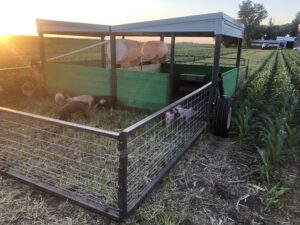
Northern Iowa producer Zack Smith designed this autonomous, mobile livestock pen as part of his Stock Cropper system to incorporate multiple species of livestock on cropland. Courtesy photo.
“We’ve been able to substantially reduce inputs onto the farm where we can increase the amount of biodiversity on that experimental chunk of land versus just growing just corn or soybeans,” he said.
Both Hibbard and Smith know the importance of protecting agricultural land.
“We have some of the richest soil in the world, and I wish more people treated it as a finite resource rather than an infinite resource,” Smith said.
“We really put a lot of value and import on our grazing management because that’s the way forward into the future, I think, of how this ranch can be passed down to the sixth generation. It’s a way to have the ranch viable and thriving and robust and exciting and magnetic that people want to be a part of,” Hibbard said.
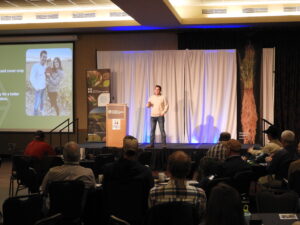
The 2024 Soil Health Conference will be held Jan. 23-24 at the Best Western Ramkota Hotel in Rapid City. The annual event receives approximately 400 attendees each year. SD Soil Health Coalition photo.
Soil Health Conference
The annual Soil Health Conference is hosted by the South Dakota Soil Health Coalition with the help of its partners and sponsors, and it will include many other speakers including noted conservationist Jay Fuhrer, Alderspring Ranch co-founder and CEO Glenn Elzinga, and former National Laboratory for Agriculture and the Environment Director Jerry Hatfield.
“We’ve got some great speakers lined up that will give producers an opportunity to learn new things and meet fellow producers from around the country,” SDSHC Board Member Brian Johnson said. “There’s always an opportunity as a producer to make changes and improve your operation. Why not start here and take something home that could have an impact for generations?”
The conference will also feature breakout sessions, discussion panels, award presentations, student contests, social activities, and networking opportunities.
Smith said that networking is a valuable part of the conference. “The speakers may spark a conversation, but the best things usually happen in between the sessions or in the evenings or just the socializing and the interactions,” he said.
Registration for the 2024 Soil Health Conference is $50 per person. Students may register for the conference at no cost, and they may enter essay and video contests for a chance to win cash prizes. More information may be found at www.sdsoilhealthcoalition.org/soil-health-conference. Questions may be directed to the South Dakota Soil Health Coalition at 605-280-4190 or sdsoilhealth@gmail.com.
Download a printer-friendly version of this article.
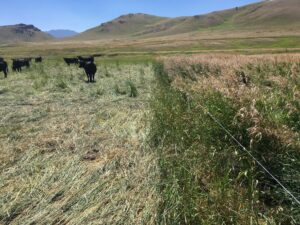
Cooper Hibbard uses high density non-selective grazing at Sieben Live Stock Company near Helena, MT. His range management practices have resulted in improved soil health, greater forage production, and higher stocking rates. Courtesy photo.
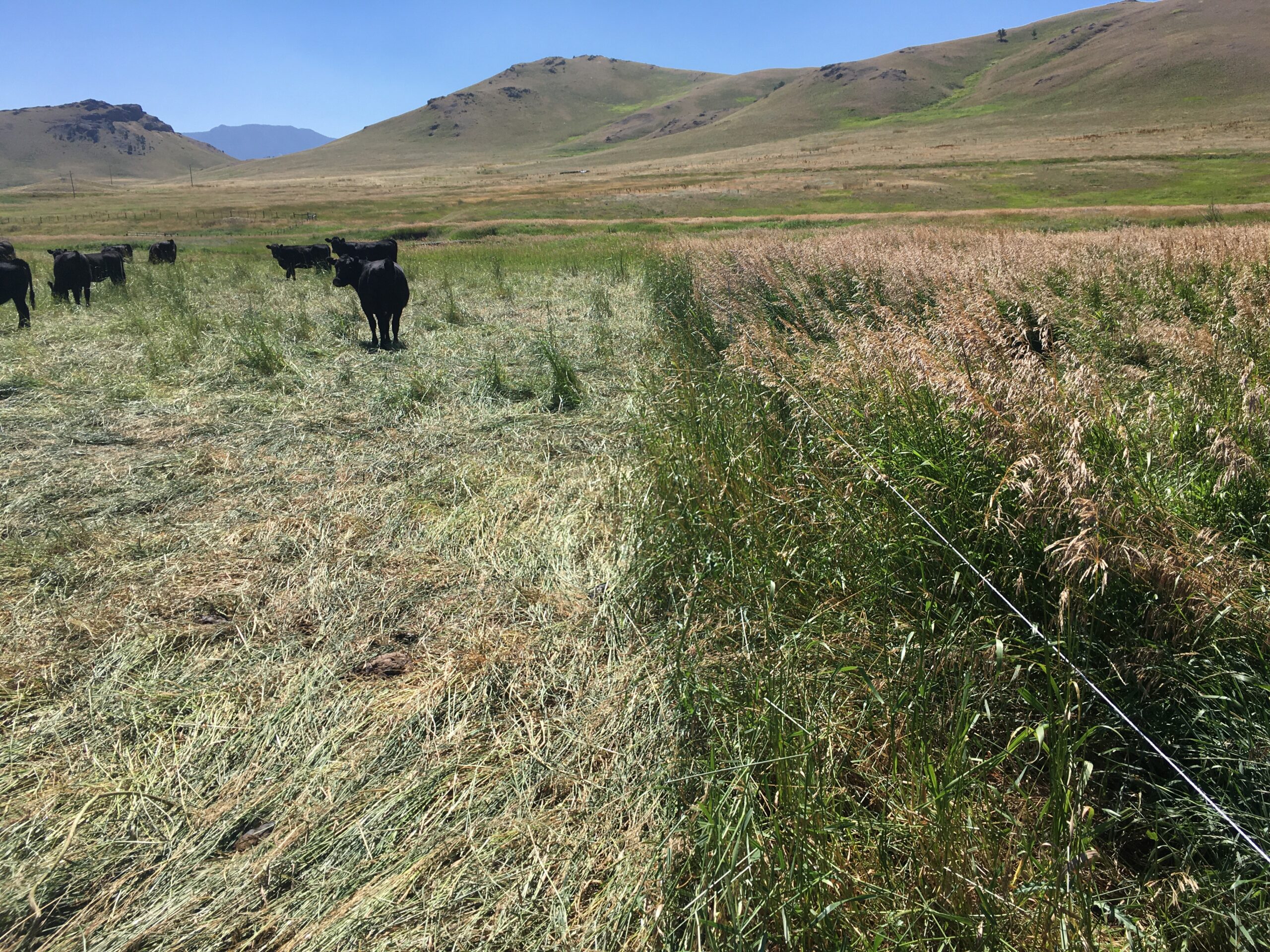
0 Comments